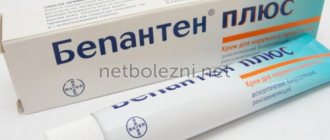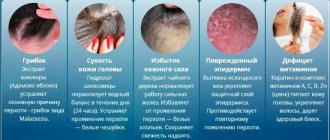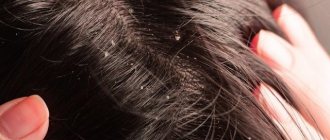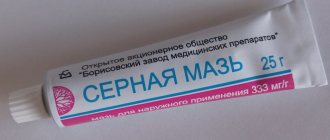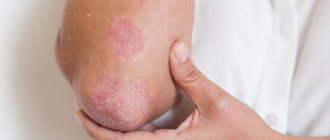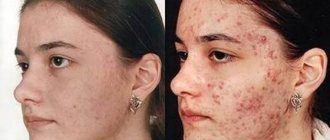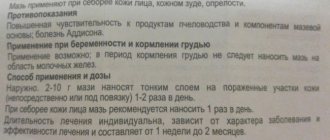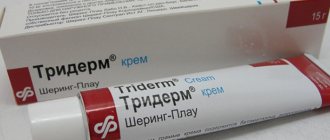Ringworm is a general name for a group of skin diseases that manifest as characteristic rashes that can be localized in different parts of the body.
Infections differ in pathogen, clinical manifestations, severity and treatment tactics. One of the fairly common types of lichen is Zhiber's pink lichen.
Zhiber's pityriasis rosea is an acute inflammatory dermatosis of unknown etiology that develops against a background of weakened immunity, for example, after an acute respiratory viral infection or influenza. Most often, the disease is diagnosed in adolescents and young adults, while it is rare in children and the elderly.
Doctors do not have a clear opinion about the causes of pityriasis rosea, but most dermatologists are inclined to believe that the causative agent of the infection is herpes virus types 6 and 7. The herpes virus remains in a latent state in the human body for a long time, but when the protective forces are weakened, it begins to actively develop and affects the upper layers of the skin with the formation of symptoms of pityriasis rosea.
What does pityriasis rosea look like?
The main symptom of lichen Zhiber is the appearance of a characteristic pink rash. First, a bright, slightly convex plaque with a diameter of 2 to 5 cm is formed on the body, the center of which may peel off slightly and differ in color from the edges. This is the so-called “maternal plaque”, next to which, after 5-10 days, small pink spots (up to 2 cm in diameter) appear along the skin tension lines (Langer’s lines).
“Daughter” rashes do not appear simultaneously, but throughout the entire illness. The rash is bright pink, peeling in the center. But after 4-5 weeks it begins to lose pigmentation, the plaques peel off without the formation of scar tissue or scars.
A number of patients may have atypical pityriasis rosea, in which the maternal plaque is absent and the body is covered with small pink spots.
Dermatologists also distinguish the following types of atypical Zhiber disease:
- urticarial - instead of pink plaques, blisters appear on the skin;
- vesicular - rashes consist of small blisters filled with clear or cloudy liquid;
- papular - cavity-free formations appear protruding above the surface of the skin.
The rash is most often localized on the torso, less often on the neck, face and limbs.
How is Zhiber's pityriasis rosea transmitted?
Zhiber's pityriasis rosea is not contagious - it is impossible to catch it from a sick person, even with close household contact: using shared dishes or towels. Therefore, patients do not need to quarantine or limit social contacts; they can continue to lead their normal lives during therapy.
Most dermatologists are inclined to believe that Zhiber's pityriasis rosea is caused by the herpes virus, which is present in the human body in a latent form.
Activation of the pathogen occurs against the background of decreased immunity, which can be caused by:
- hypothermia;
- recent injuries, surgeries and infections;
- overwork and stress;
- long-term exposure to adverse factors: for example, toxins at work;
- bad ecology;
- alcohol abuse;
- chronic diseases: diabetes, heart failure;
- hormonal fluctuations: for example, pregnancy in women;
- sudden climate change;
- smoking;
- unbalanced diet.
Most often, the virus is activated in the spring and autumn, during the season of influenza and ARVI epidemics. Vitamin deficiency, uncontrolled use of medications, and a course of antibiotics can contribute to the development of Zhiber's disease.
Treatment of shingles takes a long time
The causative agent of the shingles type of disease is the varicella zoster virus. If shingles is diagnosed, the incubation period in children is characterized by a complete absence of pronounced symptoms. After some time, a watery rash appears along the intercostal nerve fibers and may also appear on the child’s leg, arm, or face. The rash is accompanied by itching, burning and pain.
For the treatment of herpes zoster the following are used:
- Famciclovir or Famvir - inhibits further development of the virus, protects healthy cells, reduces pain;
- Acyclovir is a broad-spectrum antiviral drug that inhibits the further spread of herpes zoster;
- Valaciclovir is used to treat chickenpox and herpes zoster, which is often a complication.
Additionally, when using products for external use, drugs and dietary supplements are prescribed to strengthen the body's immune forces. Decreased immunity provokes the progression of herpes zoster.
Do pityriasis rosea need to be treated?
Many patients mistakenly consider Zhiber's disease to be a harmless dermatosis that does not require therapy or contact a dermatologist. Despite the fact that the disease is prone to self-healing, improper treatment or its absence can lead to a long course of infection (up to six months or more) and various complications.
If a rash is detected on the body, it is recommended to make an appointment with a dermatologist or dermatovenerologist as soon as possible.
This is necessary to make an accurate diagnosis: pityriasis rosea can easily be confused with such dangerous diseases as:
- seborrheic eczema;
- psoriasis;
- parapsoriasis;
- mycosis of smooth skin.
For diagnosis, in addition to a general examination, a dermatologist prescribes a number of tests:
- general blood and urine analysis;
- skin scraping;
- serological study.
Based on the results, appropriate treatment is prescribed. The dermatologist develops a treatment regimen taking into account the individual characteristics of the patient’s body, the course of the disease, and the symptoms present. This allows you to select the most effective drugs that bring significant relief from the first use.
Why does pityriasis rosea recur?
Viral infections tend to recur. Lack of treatment for pityriasis rosea leads to the fact that the pathogen is not eliminated, and after some time (usually 4-6 weeks) it goes back into a latent form until a new weakening of the immune system. Because of this, many patients experience symptoms of Gibert's disease after each seasonal cold or severe stress.
The first manifestations of the disease are:
- formation of a large pink “mother plaque”
- mild itching of the skin;
- a feeling of tightness of the skin in the area of the rash.
Subsequently, “daughter” spots appear that do not go away within several months unless you consult a dermatologist. In some cases, patients may experience other signs of a viral infection: a slight increase in body temperature, weakness, and decreased performance.
To recover, it is necessary not only to eliminate the symptoms of pityriasis rosea, but to get rid of the cause that caused the disease, and also to destroy the pathogen. This requires complex therapy under the supervision of an experienced dermatologist.
Brief summary
Treatment of lichen in children at home is carried out using ointments, creams and other means for external application. Their use helps to get rid of minor rashes and inflammation in a short time.
If the dermatological disease becomes chronic, antihypertensive drugs (Loratadine, Claritin, Diazolin), antiviral drugs (Acyclovir or Valacyclovir), and antifungal tablets (Fluconazole, Termicon, Lamisil, Terbinafine) are prescribed.
Strengthening the immune system, systematically hardening the body, and a balanced diet are important. A decrease in protective forces contributes to the rapid progression of the disease. Therefore, dietary supplements, multivitamin complexes, regular walks in the fresh air and gymnastics are useful.
Is it possible to cure pityriasis rosea permanently?
Many patients, faced with a recurrent disease, are interested in whether it is possible to get rid of pityriasis rosea forever? It is possible if you consult a dermatologist. The doctor will not only select highly effective medications to eliminate rashes and itching, but will also develop preventive recommendations to prevent relapse.
Typically, the treatment regimen for pityriasis rosea includes the use of the following medications:
- local ointments with corticosteroids: act simultaneously on several levels - relieve skin tightness, promote rapid healing of the rash;
- antihistamines – eliminate itching;
- immunomodulators - activate natural defense mechanisms to combat pathogens.
Additionally, a dermatologist may prescribe treatment of rashes with antiseptic solutions to prevent secondary infection by bacteria, as well as emollient ointments for severe peeling.
Following medical recommendations will allow you to quickly recover and forget about Zhiber’s disease forever.
Synthetic and antibacterial ointments
Ointments containing synthetic antifungal substances or antibiotics are considered effective treatments for lichen. Such active substances include terbitafine, clotrimazole, ketoconazole, mycosolone.
Popular ointments with synthetic and antibacterial components:
- Mikoseptin - a medicine based on undecylenic acid is applied to the affected areas of the skin in the morning and evening for 14 days;
- Mycozon is a miconazole-based medicine used to treat fungal, bacterial, and mixed infections;
- Fungoterbin - pharmacological action is due to the active substance terbinafine;
- Nizoral - shampoo and cream with the active ingredient clotrimazole, is most effective for multi-colored and ringworm in children.
Such medications are most effective at the initial stage of the disease in children. In the chronic form, it is recommended to change medications periodically, since fungi and other pathogens may develop resistance to them.
How to cure pityriasis rosea during pregnancy?
Hormonal changes that occur in the body of a pregnant woman often provoke the development of various diseases, including pityriasis rosea. The disease is not dangerous for the fetus, but requires close attention, since it indicates a weakened immune system of the expectant mother and can cause significant discomfort.
The main rule that a pregnant woman should follow when treating pityriasis rosea is not to use any medications or ointments without first consulting a doctor. “Folk methods” can be no less dangerous for the fetus. Any impact on the body is allowed only after agreement with a dermatologist. The complex of drugs is selected by a specialist and may include ointments, vitamin preparations, and antiseptics.
It is also important for patients to follow the following recommendations:
- refuse to visit the bathhouse, sauna, swimming pool. Instead of a bath, you should take a shower without using a hard washcloth or rubbing with a towel;
- choose spacious linen made from natural fabrics. Synthetic materials interfere with the natural breathing of the skin, increase sweating, which leads to worsening the symptoms of pityriasis rosea and the appearance of new rashes;
- exclude foods that cause allergies from the diet: eggs, red berries and fruits, chocolate. It is also recommended to reduce the amount of fried, flour, smoked foods and replace them with boiled vegetables;
- Do not use cosmetics on damaged areas of the skin.
By following the doctor’s recommendations, the girl will quickly restore her health without negative effects during pregnancy.
Treatment of ringworm
Ringworm most often occurs on the head, back, shoulders and legs. A child becomes infected from a sick animal, person or through his things. Before using the ointment, the affected areas of the body must be treated with iodine and only after that the medicine should be applied.
- Exifin, Lamisil, Zalain - have a pronounced antifungal effect, applied to the affected areas once every 7 days;
- Funginal and Clotrimazole - antifungal drugs are applied 2-3 times a day;
- Exoderil - the medicine is applied to the affected areas in the morning and evening for 2 weeks;
- salicylic and tar ointment - the medicine is applied in a thick layer in the evening, before bedtime.
In order to speed up recovery and prevent further spread of the disease, the affected areas of the scalp should be cut off every week, and the skin should be washed with warm soapy water.
If the rash spreads rapidly and healthy areas of the skin are affected, the patient is additionally prescribed antifungal drugs in the form of tablets.
The most commonly prescribed drugs are Terbinafine or Itraconazole. These medications are highly effective against many types of fungus and do not have a toxic effect on the body of children.
What does pityriasis rosea look like when it goes away?
With proper treatment, pityriasis rosea goes away without the formation of scars. After exfoliation of the plaques, clean skin remains in their place, sometimes a lighter shade, but over time this defect disappears. However, in patients with atypical forms of Gibert's disease, the formation of difficult-to-heal ulcers is possible.
Self-medication and lack of qualified medical care increases the risk of complications:
- secondary infection of the rash with bacterial flora;
- the appearance of suppuration and ulcers;
- the formation of areas of hyperpigmentation after recovery.
To prevent such a development of the disease, at the first symptoms of pityriasis rosea, it is recommended to make an appointment with a dermatologist.
After recovery, the doctor will develop recommendations to prevent relapses.
They usually include a number of activities to strengthen the immune system:
- regular intake of vitamin complexes in the autumn-spring period;
- proper rest, especially during times of increased intellectual, physical or psycho-emotional stress (exams, important projects, other stress);
- rejection of bad habits;
- moderate physical activity;
- maintaining a balanced diet, with limited consumption of allergenic foods, as well as smoked, fatty, flour foods.
Following these tips allows you to maintain immunity, which suppresses the herpes virus and prevents the recurrence of pityriasis rosea.
Why can't you scratch pityriasis rosea?
Zhiber's pityriasis rosea can occur without symptoms, including without skin irritation. But some patients suffer from itching in the area of the rash. As with other dermatoses, you should not scratch the site of infection.
Violation of this rule leads to:
- damage to the top layer of skin and the appearance of scratches;
- the risk of introducing bacterial flora into the plaque, which will cause inflammation and suppuration of the tissue;
- increase in the area of rashes.
To cope with itching and skin irritation, seek help from a dermatologist or dermatovenerologist. The doctor will select corticosteroid ointments to relieve inflammation and antihistamines to relieve itching and burning.
Treatment of lichen planus
The child may suffer from lichen ruber. This is a chronic dermatological disease that is accompanied by bright red rashes. The spots quickly spread over the skin of the body, even affecting the mucous membranes and nail plates. It is characterized by a long, chronic course with alternating periods of exacerbation and remission.
For the treatment of red lichen in children, the following are prescribed:
- Salicylic ointment - reduces redness, exfoliates the top layer of tissue, stimulates the growth of new cells;
- Fenistil and Gistan are plant-based drugs that inhibit immune allergic reactions and cleanse the integument;
- Pimecrolimus and Tacrolimus are non-hormonal ointments with decongestant, anti-inflammatory, and soothing effects;
- Solcoseryl - applied to the affected areas, promotes their rapid healing.
In addition, antihistamine tablets are prescribed with products for external application - Diazolin, Loratadine, Fenistil. The therapeutic course is long and can range from 4 weeks to 6 months.
Can pityriasis rosea be smeared with iodine or brilliant green?
Iodine and brilliant green are one of the most accessible and widely known antiseptic drugs for treating scratches and other superficial wounds. Many patients who are faced with pityriasis rosea “out of habit” use these remedies to treat the rash. But this approach does not give results.
The virus that causes pityriasis rosea is concentrated in the deep layers of the skin - iodine and brilliant green will not be able to eliminate the cause of the infection. In addition, both products dry out the skin greatly and can lead to additional chemical burns. As a result, the patient will only worsen the symptoms and delay recovery. Iodine and brilliant green should not be used to treat Gibert's disease.
General information
An ointment based on sulfur is widely used for various diseases of the dermis. The simple composition makes the ointment accessible to different segments of the population, because prices per jar start at only 28 rubles.
The drug is used not only to relieve unpleasant symptoms, but also as the main medicine that can eliminate the cause of the disease. The main component, which is sulfur in its pure form, better known as a chemical element, is supplemented by the following auxiliary substances:
- petrolatum;
- water;
- emulsifier.
In the pharmacy you can find sulfur ointment packaged in glass jars with a plastic lid or in aluminum tubes.
Is it possible to treat pityriasis rosea with celandine?
Another popular “folk recipe” for treating lichen is using celandine. However, the juice of this plant (as well as a decoction from it) is also not able to penetrate into the deep layers of the skin, that is, it will not be able to cope with the causative agent of the disease.
Also, celandine does not help speed up the healing of the skin, but can lead to additional damage and inflammation. It should be remembered that the juice of this plant is poisonous, can cause burns, worsen general health and cause a number of side effects. Therefore, the use of celandine not only will not alleviate the patient’s condition, but may also aggravate it, increasing the risk of complications.
Sulfur ointment and the main reasons for its use against lichen
In case of a complicated course of a fungal or viral disease, doctors prescribe both local and systemic drugs to patients. They have a comprehensive effect on the cause of the pathology, mutually enhancing clinical effectiveness. But in most cases, lichen responds well to treatment with means for external use: ointments, creams, gels. Sulfur ointment is a time-tested drug that has various therapeutic properties:
- disinfectant;
- antiseptic;
- antiparasitic;
- antimicrobial.
The active substance of the drug enters into chemical reactions with organic compounds contained in the subcutaneous tissue. The products of this interaction are sulfides and pantothenic acid. They inhibit viruses and pathogenic microorganisms, inhibiting growth and reproduction. Sulfur ointment for lichen in humans is used because of its ability to effectively fight skin inflammation. Experts note that even a single application of the drug quickly eliminates the symptoms of the skin disease.
Treatment effectiveness
Sulfur ointment is used for the treatment of lichen only as a symptomatic, that is, an auxiliary remedy. It prevents the proliferation of infectious pathogens and eliminates external signs of the disease.
But the active ingredients are not capable of completely destroying fungi and viruses.
It should also be taken into account that this type of skin disease is often transmitted from person to person. Therefore, therapy should be started as quickly as possible and only after consultation with a dermatologist. The doctor will definitely take a biological sample (skin scraping) and send it to the laboratory for diagnosis. As a result of the study, the type of infectious pathogen and its sensitivity to pharmacological drugs will be established. What diagnosis can be given to an adult or child:
- ringworm, pityriasis versicolor. It is transmitted from person to person and has a long and severe course. The skin is damaged as a result of infection with fungi, which require antifungal agents to destroy. These are Clotrimazole, Terbinafine, Mycozoral;
- shingles. The cause of skin pathology is activated herpes viruses. The disease is accompanied by severe painful sensations. To transfer the pathology into remission, not only local, but also systemic use of antiviral drugs is required. The greatest therapeutic effectiveness is typical for Acyclovir, Zovirax, Famciclovir;
- pink or red lichen. They refer to diseases whose etiology has not been fully established. Spots on the skin appear with a sharp decrease in immunity and exacerbation of chronic diseases. An acute reaction to a stressful situation can trigger a pathological process. Pityriasis rosea and red lichen usually disappear without any treatment after 1-2 weeks.
Refusal to visit a doctor and treatment in the absence of laboratory diagnostics will lead to progression of the disease. Using Sulfur Ointment will help combat symptoms, but this effect will not last long. Ringworm spreading to adjacent healthy areas of the skin will cause severe damage to the epidermis.
Is it possible to apply zinc ointment to pityriasis rosea?
Zinc ointment is a popular antiseptic with a softening effect. This remedy is indeed prescribed for the treatment of certain skin diseases, in particular eczema. But it is indicated for use in the treatment of rashes that produce exudate (that is, weeping ulcers), since it has a pronounced drying effect.
In the case of pityriasis rosea, there is no exudate; moreover, the plaque often flakes off and causes a feeling of tightness. The use of zinc ointment can intensify this unpleasant symptom. To improve the condition of the skin, you can use local preparations with a pronounced moisturizing effect. They often contain natural vegetable oils, as well as antiseptic components. But a dermatologist should select medications.
Effective and cheap antifungal ointments
To treat lichen in children at home, effective, inexpensive, safe ointments are used, which are selected depending on the type of disease and its symptoms. If rashes occur on any part of the body - legs, butt, back, cheek, you can use inexpensive and effective means for external treatment of the affected areas of the skin.
- Sulfuric ointment
— contains sulfur and petroleum jelly, which are well tolerated by the child’s body and do not cause allergies. Accelerates the healing of affected tissues, destroys many types of fungal microorganisms. - Ichthyol
- an antifungal agent, it is recommended to smear it for pityriasis versicolor. Shows high effectiveness in other dermatological diseases of fungal origin. - Sinaflan
is prescribed for the red flat and pink type of the disease. Allowed for use after 2 years of age.
One of the most popular inexpensive drugs is Clotrimazole. It is effective for any lichen of a fungal nature. The medicine is applied in a thin layer to clean, dried epidermis 3-4 times a day. The course of treatment is up to 8 weeks until the rash disappears and 4-8 weeks after to consolidate the result.
Can pityriasis rosea be treated with salicylic acid?
Salicylic acid, like salicylic alcohol, is another popular antiseptic. It disinfects the skin and fights a wide range of bacteria, viruses and fungi. But in the case of pink lichen, its use is ineffective: the virus is located in the deep layers of the skin.
Antiseptic agents in the treatment of Gibert's disease are used only to prevent the risk of secondary infection of the rash with bacterial flora, and not to combat the pathogen itself. But it is not recommended to use salicylic acid and alcohol for this purpose either: both substances dry and irritate the skin and increase peeling. The effect of using the product will be the opposite: the rash will take longer to heal, and after healing, marks with disturbed pigmentation may remain.
Contraindications
The main contraindication to the use of sulfur ointment is individual intolerance to the active substance. If the skin reacts sharply with allergic rashes to contact with sulfur, treatment with the ointment will have to be canceled and another remedy used.
In addition, with extensive damage to the body by fungal or bacterial infections, there is a high risk of getting sulfur poisoning - if more than 30% of the skin is covered with the drug. If scabies spreads throughout the body, use less dangerous sprays.
If the patient has not previously had experience with sulfur ointment treatment, it is recommended to first test it on the wrist by applying a small amount of the product. If redness or burning occurs, you will have to stop using sulfur ointment.

